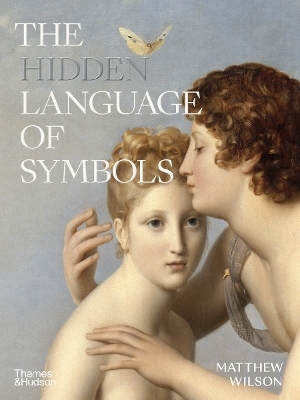
The Hidden Language of Symbols
Seiten
2022
Thames & Hudson Ltd (Verlag)
978-0-500-02529-1 (ISBN)
Thames & Hudson Ltd (Verlag)
978-0-500-02529-1 (ISBN)
A stimulating narrative and reference resource that guides the reader through the most significant symbols from worldwide art history.
Why do we reach for the red rose on Valentine’s day? Where did the owl gain its reputation for wisdom? Why should you never trust a fox? In this visual tour through art history, Matthew Wilson pieces together a global visual language enshrined in art: the language of symbols.
Symbols exert a strong hold in the image-saturated 21st century, and have done so for thousands of years. From national emblems to corporate logos and emojis, our day-to-day lives abound with icons with roots in the distant past. Expert art historian Matthew Wilson traces the often surprising trajectories that symbols have taken through history, from their original purposes to their modern meanings, identifying the common themes and ideas that link seemingly disparate cultures. Thus we meet the falcon as a symbol of authority from the ancient Egyptian pharaohs to the medieval aristocracy; the dog as stalwart companion from the classical era to the Renaissance; and the mythical phoenix as a symbol of female power connecting a queen in England with a goddess in China. We also see moments of radical reinterpretation and change: the transformation of the swastika from an auspicious symbol of hope to one of hate.
From Palaeolithic cave paintings to contemporary installations, Wilson deftly guides us through this world of symbols, showcasing their enduring ability to express power, hope, fear and faith, and to create and communicate identities, uniting – or dividing – the people that made them.
Why do we reach for the red rose on Valentine’s day? Where did the owl gain its reputation for wisdom? Why should you never trust a fox? In this visual tour through art history, Matthew Wilson pieces together a global visual language enshrined in art: the language of symbols.
Symbols exert a strong hold in the image-saturated 21st century, and have done so for thousands of years. From national emblems to corporate logos and emojis, our day-to-day lives abound with icons with roots in the distant past. Expert art historian Matthew Wilson traces the often surprising trajectories that symbols have taken through history, from their original purposes to their modern meanings, identifying the common themes and ideas that link seemingly disparate cultures. Thus we meet the falcon as a symbol of authority from the ancient Egyptian pharaohs to the medieval aristocracy; the dog as stalwart companion from the classical era to the Renaissance; and the mythical phoenix as a symbol of female power connecting a queen in England with a goddess in China. We also see moments of radical reinterpretation and change: the transformation of the swastika from an auspicious symbol of hope to one of hate.
From Palaeolithic cave paintings to contemporary installations, Wilson deftly guides us through this world of symbols, showcasing their enduring ability to express power, hope, fear and faith, and to create and communicate identities, uniting – or dividing – the people that made them.
Matthew Wilson is an art historian, educator and writer. He has written for numerous publications and media on art and culture, and is an examination specialist in History of Art. His latest book, Symbols in Art in the Art Essentials series (Thames & Hudson, 2020) was described as ‘masterly’ by Christopher Lloyd.
Introduction: Leaps of the Imagination
1. The Hidden Language of Power
2. The Hidden Language of Faith
3. The Hidden Language of Uncertainty
4. The Hidden Language of Hope
| Erscheinungsdatum | 04.11.2022 |
|---|---|
| Zusatzinfo | 249 Illustrations, color |
| Verlagsort | London |
| Sprache | englisch |
| Maße | 186 x 246 mm |
| Gewicht | 1200 g |
| Themenwelt | Kunst / Musik / Theater ► Kunstgeschichte / Kunststile |
| ISBN-10 | 0-500-02529-0 / 0500025290 |
| ISBN-13 | 978-0-500-02529-1 / 9780500025291 |
| Zustand | Neuware |
| Informationen gemäß Produktsicherheitsverordnung (GPSR) | |
| Haben Sie eine Frage zum Produkt? |
Mehr entdecken
aus dem Bereich
aus dem Bereich


